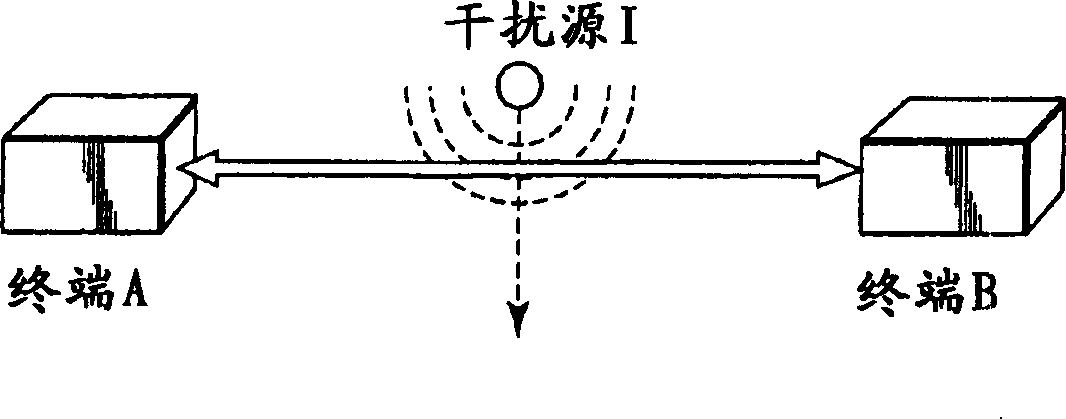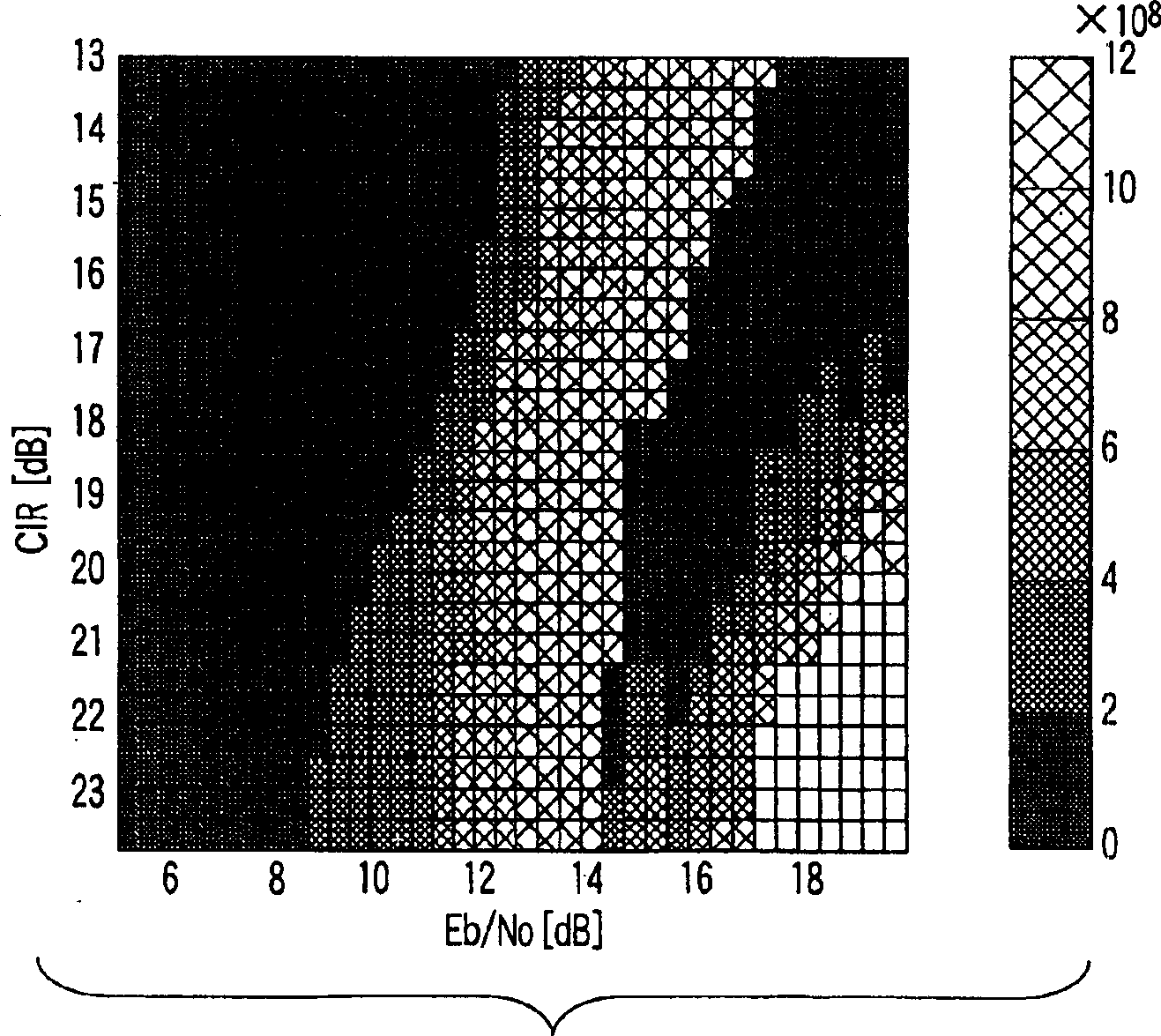Adaptive modulation for wireless networks
A modulation scheme and adaptation technology, applied in the field of modulation scheme selection and control, can solve problems such as deterioration of system response
- Summary
- Abstract
- Description
- Claims
- Application Information
AI Technical Summary
Problems solved by technology
Method used
Image
Examples
Embodiment Construction
[0026] The described embodiment of the invention concerns two terminals, terminal A and terminal B, communicating with each other over two communication links, here referred to as an uplink and a downlink. Accordingly, sending data from terminal A to terminal B will take place on the uplink, and sending data from terminal B to terminal A will take place on the downlink.
[0027] image 3 A representation of the data throughput on a link between two terminals under different noise and interference conditions is shown. exist figure 1 In the configuration shown, terminals A and B are communicating with each other and an interferer is affecting the link between them. Noise will also affect the channel. image 3 It shows the degree of interference, that is, the signal-to-interference ratio (CIR, channel to interference ratio), and the ratio of bit energy to noise density (E b / N o ), followed by energy to noise ratio (energy to noiseratio), the impact on the throughput of one ...
PUM
 Login to View More
Login to View More Abstract
Description
Claims
Application Information
 Login to View More
Login to View More - R&D
- Intellectual Property
- Life Sciences
- Materials
- Tech Scout
- Unparalleled Data Quality
- Higher Quality Content
- 60% Fewer Hallucinations
Browse by: Latest US Patents, China's latest patents, Technical Efficacy Thesaurus, Application Domain, Technology Topic, Popular Technical Reports.
© 2025 PatSnap. All rights reserved.Legal|Privacy policy|Modern Slavery Act Transparency Statement|Sitemap|About US| Contact US: help@patsnap.com



